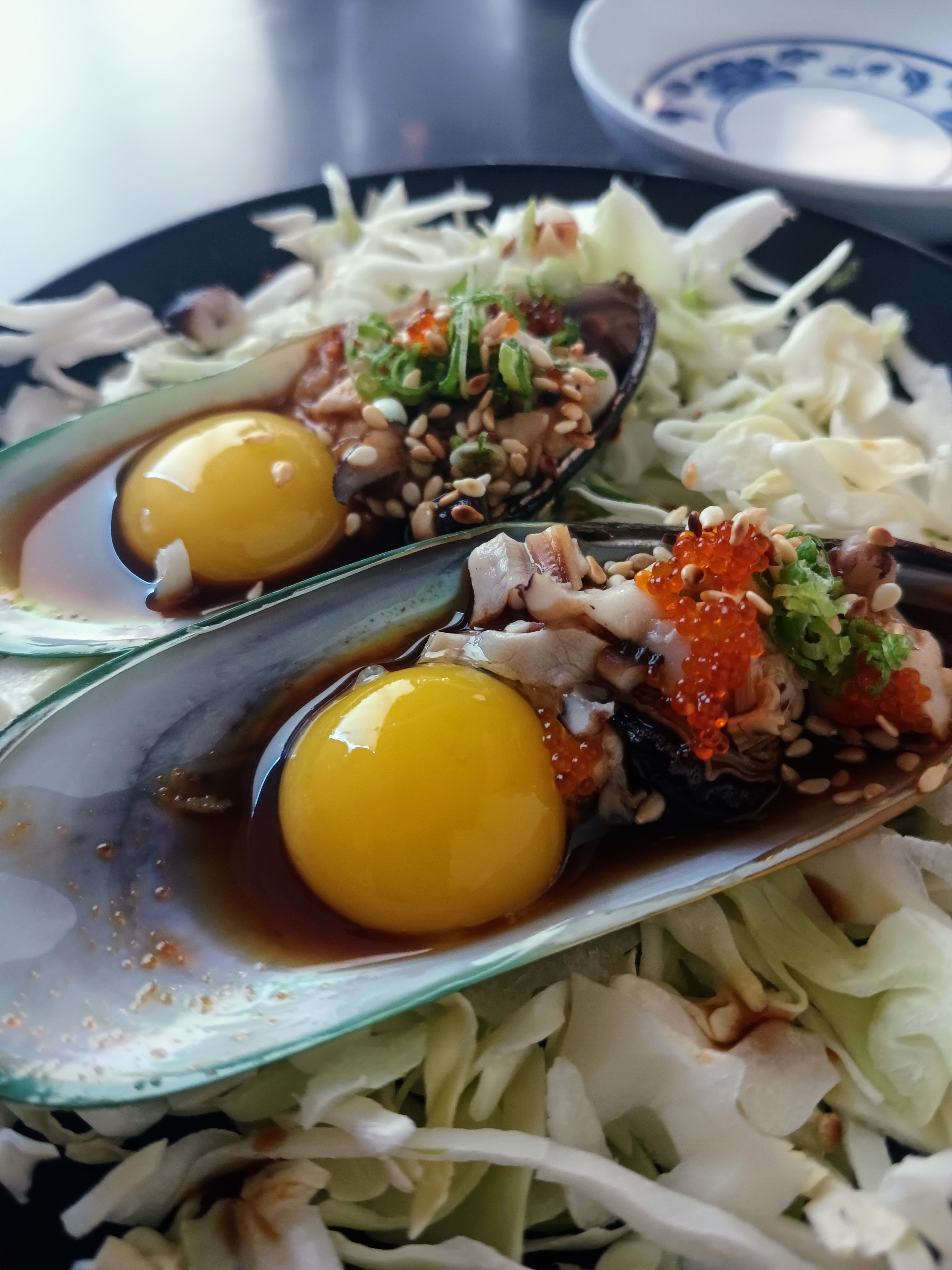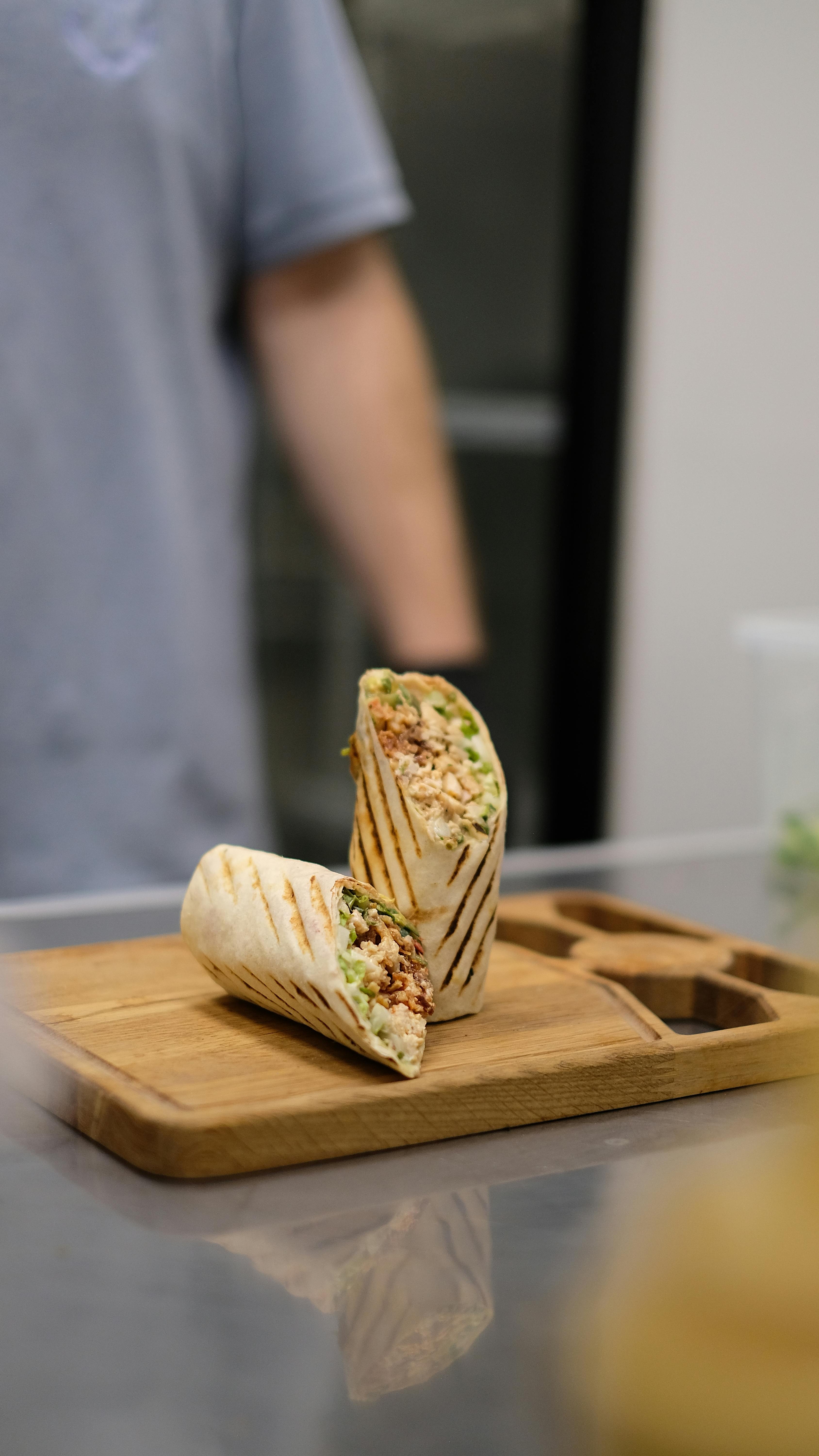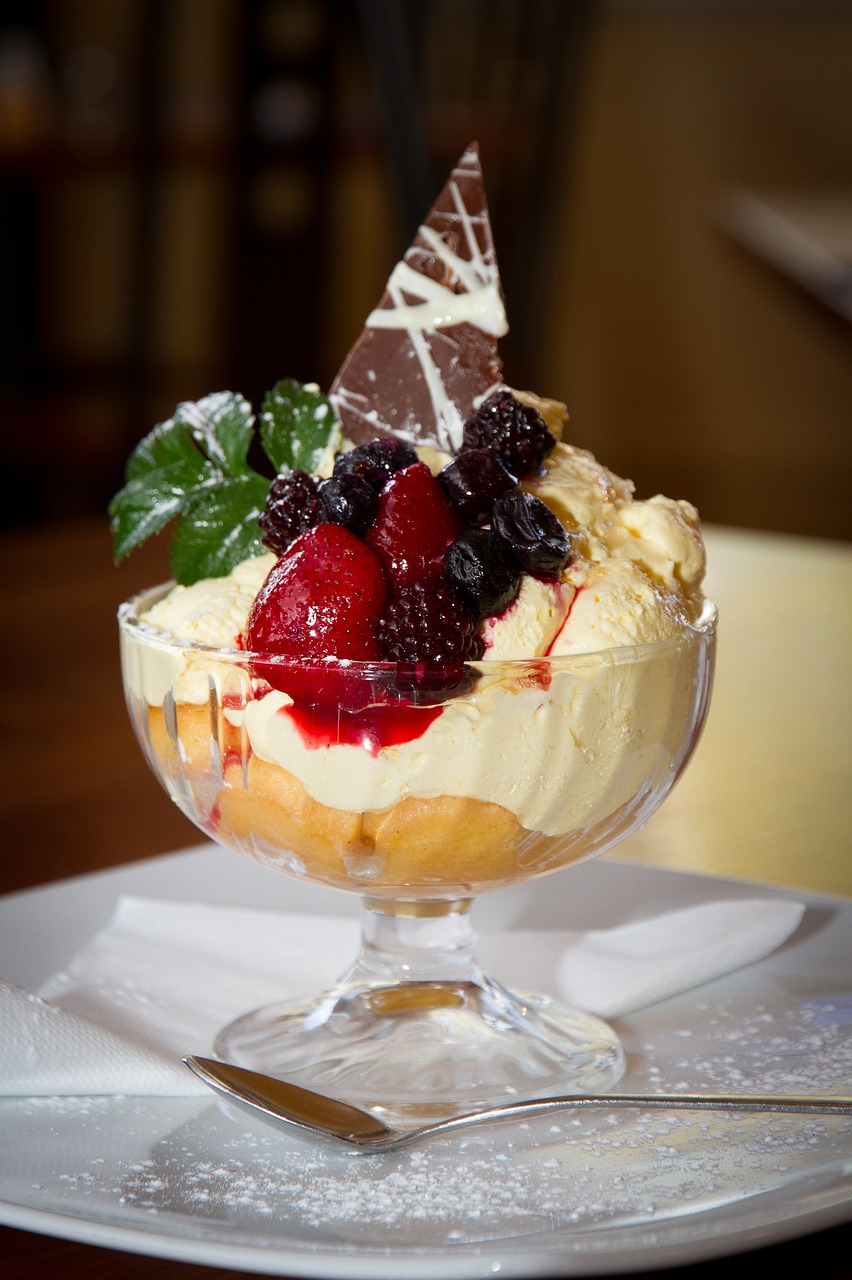Flavor Sequencing: The Most Mind Blowing Restaurant Experience I’ve Had All Year

The other day I had some mussels at a Japanese restaurant, and it was one of the most wild eating experiences I’d ever had. They are pictured above with soy sauce, raw quail egg, thinly sliced scallions, toasted sesame seeds, roe (not caviar) and of course, mussels.
So what made this dish so crazy? Well first off, it’s beautiful. But second, whoever invented the dish knew exactly what they were doing. It wasn’t just about which ingredients to add… it was also about the order and placement of each component. You’re meant to throw back each mussel in one bite, and as you do you go through a mind-bending experience of salty umami from the soy sauce, followed immediately by a rich creaminess from the quail egg. As you chew, you get a crunchy pop of toasted sesame flavor, which is soon followed by the pungent, tingly and floral scallions. And of course this whole thing is underscored by tender mussels that hold the whole thing together. It wasn’t just a tasty snack, it was an entire journey contained in one small bite.
This is a concept I call “flavor sequencing.” This is where flavors and textures are arranged (either deliberately or naturally) to create a sequential eating experience. This showcases different elements of the dish in a harmonious order, and it turns your food into something pretty special. It’s not necessary to practice flavor sequencing all the time (in fact, I suggest you don’t). However, for the right dish, it’s definitely worth practicing a little to get that extra wow factor for your guests.
The Two Types of Flavor Sequencing

Natural Flavor Sequencing: This occurs when the ingredients and their arrangement naturally lead to a sequence of flavors and textures without deliberate manipulation. It relies on the inherent qualities and combination of ingredients. Here are some examples:
- Burritos and tacos with their components layered on top of each other and/or intermingled throughout the food. This makes some bites meaty, others acidic, others crunchy, others creamy, etc. Every bite brings something new, which makes the whole meal super enjoyable and fun.
- Chunky soups and stews that are properly assembled have great flavor sequencing. Every bite has something different, but it’s all held together by a strong broth.
- Sushi, by its very nature, has pretty neat flavor sequencing. A roll has you starting with rice and seaweed before moving on pretty quickly to super tender fish and crunchy veggies.
- Layered salads bring new textures and flavors with every forkful. Picture a good cobb salad that gets you a mouthwatering bite of bacon on one bite, then some creamy avocado and eggs on the next. In my opinion, salads like these can be mixed too much if you’re not careful, which renders them overly homogenous and destroys any flavor sequencing. The best layered salads are meaningfully.
- Tasting menus are engineered to give you precise portions of every component in a very specific order. These menus are themed specially and tend to build on that theme from one component to the next.
- Layered desserts like tiramisu and trifle have to be carefully sequenced, or they’re no good. These desserts are set apart by their layers. This is different from lasagna, which while layered, ends up being a pretty homogenous experience anyway.
- Signature dishes like those mussels I wrote about at the beginning of this post are often carefully sequenced. These are the types of dishes that a kitchen nerd with years of experience spent a month working on.

Intentionally Crafted Flavor Sequencing: This involves deliberate planning to ensure each bite follows a designed sequence of flavors and textures. The chef controls every aspect, from ingredient selection to preparation and presentation. Here are some examples:
How To Naturally Develop Flavor Sequencing in a Dish
Naturally acquiring good flavor sequencing is a lot easier than trying to go all Gordon Ramsey on a dish. So here are a few general tips that you can follow in just about every recipe that’ll consistently get you that wow factor:
Diverse Ingredients: Use a variety of ingredients with different flavors and textures. For example, mixing crunchy vegetables, creamy sauces, and tender meats can naturally create a sequence.
Balanced Combinations: Ensure that the combinations are balanced. Natural sequencing often comes from well-balanced dishes where no single ingredient overpowers the others. To help with this, think about your levels of salt, fat, and acid. Do they all sing together? Does your dish seem like something you’ll get tired of after a few minutes?
Simple Layering: Layer ingredients in a way that encourages different bites to offer varied experiences. Think about how the components will interact in each mouthful. If you’re making a salad, sandwich, casserole, etc, just pause for a moment to think about the order you’re adding things and why. The key here is to keep the process straightforward and simple. If you’ve seen something done most of your life, it’s probably for a reason (though this isn’t always the case). Alternatively, put a little thought into it to make a dish really yours.
Minimal Processing: Keep the ingredients close to their natural state to let their inherent qualities shine through. Too much processing can homogenize the flavors and textures. Though warning: this tip shouldn’t be used at all times for all dishes. Some dishes are meant to be homogenous, and some ingredients are meant to be highly processed (like when you’re barbecuing tough cuts of meat).
With all that said, just keep the above in mind and you should get some good flavor sequencing.
How to Intentionally Develop a Strong Flavor Sequence
First things first, make sure you follow all the advice above. But aside from that, here are some ideas to help you thoughtfully put together a chef’s version of a flavor sequence:
Contrasting Elements: Use contrasting flavors (sweet, salty, sour, bitter, umami) and textures (crunchy, creamy, chewy) to keep the palate engaged.
Controlled Portions: Ensure each bite can capture the intended sequence. This might involve precise portioning and placement of each component. This is one of the reasons most items on a tasting menu are actually quite small. If you want to make a dish focused heavily on its flavor sequence, consider making it as just an appetizer or hors d'oeuvre.
Flavor Bridges: Create smooth transitions between flavors. Elements like sauces, dressings, or spices can help bridge the gap between different flavors and textures. The flavor bridge with the mussels I wrote about is the combination of soy sauce and mussels.
Plating: Arrange the dish so that each forkful or spoonful captures the intended sequence. Consider the eater’s experience as they move through the dish.
Well that about sums it up. Go forth and sequence your flavors!
 Matthew Christensen
Matthew Christensen
Weekly Newsletter Contributor since 2023
Email the author! matthew@dvo.com
